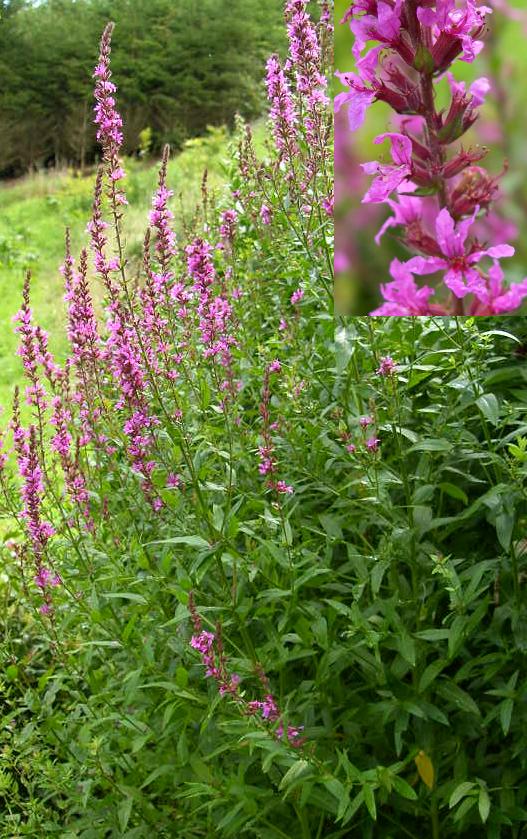Purple LoosestrifeScientific Name: Lythrum salicaria |
This herbaceous perennial is sometimes grown as an ornamental plant in the border where it makes a striking show. However, left to its own devices it is very invasive and is a particular problem in wetland areas of North America where it was introduced as an ornamental plant, but escaped to the wild. It is a member of the Lythraceae Family and is a native of Europe and Asia, but is now distributed around the northern hemisphere, temperate regions tolerating wet or dry conditions. The plant develops a large, tough root-mass which expands horizontally, but the plant spreads by seeding - a mature plant can produce up to 2.5 million seeds which are viable for many years.
It is used in herbal medicine to treat diarrhoea due to its tannin content, and is suitable for infants. Some studies have shown antibacterial and antifungal properties with some effect on Candida - the cause of thrush.
Large stands could be mistaken for Rosebay Willowherb due to the similarity of the leaves and flower spikes.
The stems are square in section, have many branches and can reach up to 2 metres in height. The lanceolate leaves do not have a stalk, are arranged in opposing pairs or whorls on the stem and can sometimes have hairs.
After a few years the fibrous root ball becomes quite large with up to 50 stems arising from it, but does not have lateral spreading rhizomes, although stems which touch the ground can take root.
The flowers are arranged in tall spikes up to 35cm long. They are dark pink to magenta in colour with 5 to 7 petals. The seed is carried to new areas in watercourses or by attaching to birds and other animals.
A small number of plants can be uprooted, but mature plants are hard work.
Weedkillers to use:-
Glyphosate will kill the stems and roots, but there will propably be a reservoir of seed which will germinate later. There has been some research on biological control with leaf beetles and root feeding grubs. Two
leaf-eating beetles, Galerucella calmariensis and G. pusilla have been released in the western and midwestern USA. They weaken the Loosestrife and after two to five years about 95% of the stand is deatroyed, allowing native species of plants to overwhelm it.
See also Great Willowherb and Rosebay Willowherb
